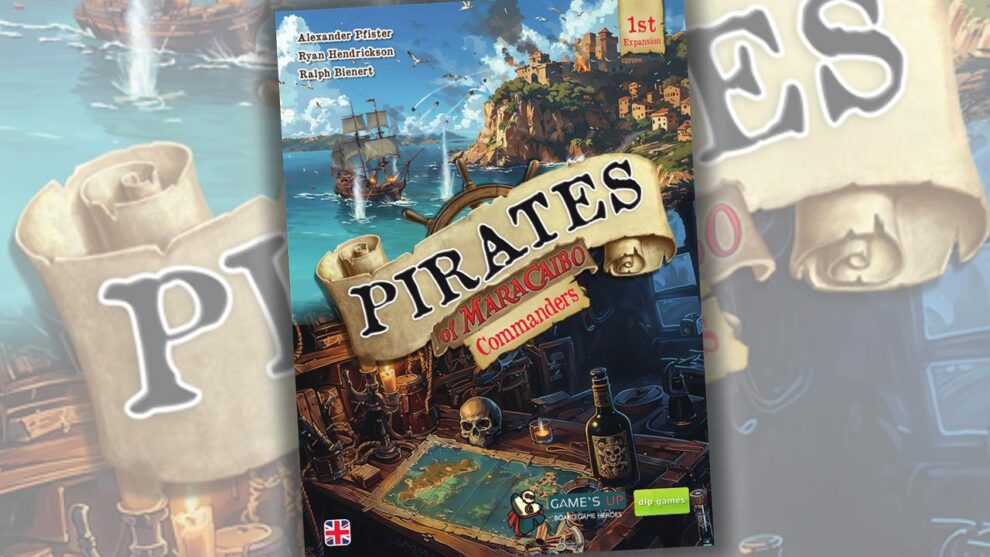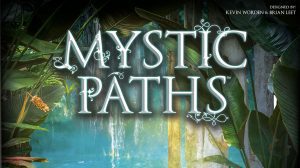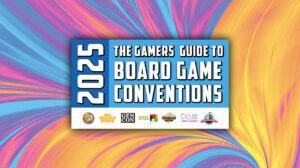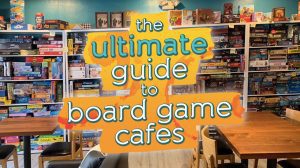Disclosure: Meeple Mountain received a free copy of this product in exchange for an honest, unbiased review. This review is not intended to be an endorsement.
Pirates of Maracaibo made my personal top-10 list for 2024; since then, a number of things must be shared for the record:
- I have not played the original Maracaibo even once since playing Pirates of Maracaibo. In fact, not only have I gotten rid of my copy of the original Maracaibo, I haven’t even played it on Board Game Arena since Pirates of Maracaibo came along.
- I’ve played Pirates of Maracaibo in-person and online more than 50 times. I love it solo, I love it at the full player count, I love it as an entree, I love it as an appetizer. I love it in any format you want.
- Across the designs I’ve tried from Alexander Pfister (a co-designer for Pirates of Maracaibo, along with Ryan Hendrickson and Ralph Bienert), I think Pirates of Maracaibo is Pfister’s best work.
I get it—that last point might be a stretch for some players. Of the Pfister designs I have tried, I’ve played Great Western Trail, Oh My Goods!, Mombasa/Skymines (the same system, with the latter serving as the update), Isle of Skye, Maracaibo, and Boonlake. Some of those other titles are good; others are classics. But none of them packs as much game into such a clean space quite like Pirates. Somehow, Pfister has eliminated one of his own games with a version of the system that strips every loose end and offers a fantastic, flexible game that I can play with almost anyone in about an hour.
Pirates of Maracaibo has held up over dozens of plays. Naturally, expansion content had to arrive eventually, so I was excited to grab a review copy of Pirates of Maracaibo: Commanders at Gen Con 2025 from our partners at Capstone to see if the Pirates system needed more goodies.
As an excuse to get Pirates back to the table, Commanders does what it should. About a half-dozen people in my strategy group have either joined me for plays or weighed in during conversations we have in our game chat, and I think we’re all in the same place. Commanders is good, but I’m not ready to use the word “essential.”
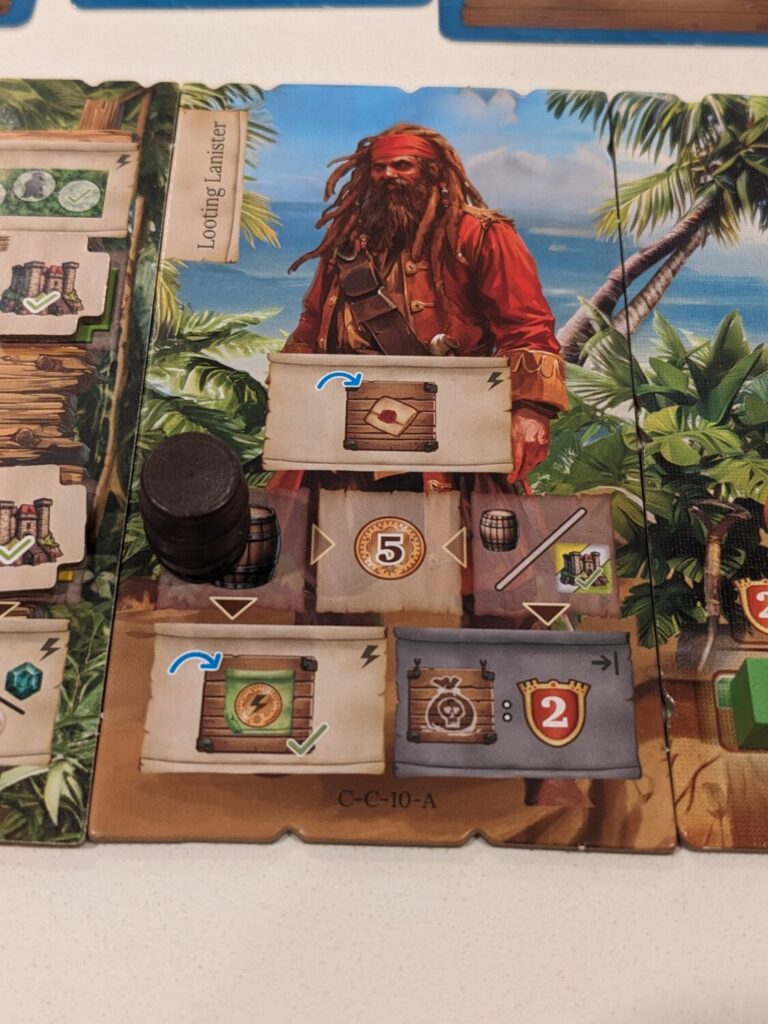
Easy on the Rum
Pirates of Maracaibo is a 1-4 player dice-chucking and exploration game that is ultimately a race to score the most points across three rounds. Pirates uses elements from Pfister’s 2017 release Maracaibo, as players sail around a map of location and improvement cards to collect treasure, explore the Gulf of Maracaibo, and construct Residences to score a whole bunch of points. For more on how the base game plays, check out my review.
The Pirates of Maracaibo base game includes a half-dozen very minor variants that can be used to spice up the experience—different map layouts, rubies, and an altered quest mechanic that makes it more risky to take on quest cards unless a player can achieve the harder of the two tasks on a card. Even though these are included, I rarely use the other variants because the base game is so good. Further, I have seen players win so many different ways that I know there’s not one dominant strategy, so it’s always fun to find new ways to challenge my highest scores.
The Commanders expansion includes a few minor items, such as a new ship card, a new action for solo play, four new Figureheads (the mastheads that can be added to a player’s ship board) and new bonuses that trigger when players reach Maracaibo. Those are all fine, but they are not the reason to consider buying this expansion.
There’s a new Exploration board that replaces the one used in the base game, and some of the actions on that board differ from the ones in the base game. The new Exploration board is double-sided and broken in half, offering players a chance to mix and match with four different setups by flipping the two halves available. Some of the new bonuses are cool, but the main scoring for the Exploration board hasn’t changed—flying past the four rivers still grants a player 16 points as well as other bonuses along the way.
There are four main additions to this expansion that we’ll talk through next: rum markets, cannons, forts, and the Commander boards.
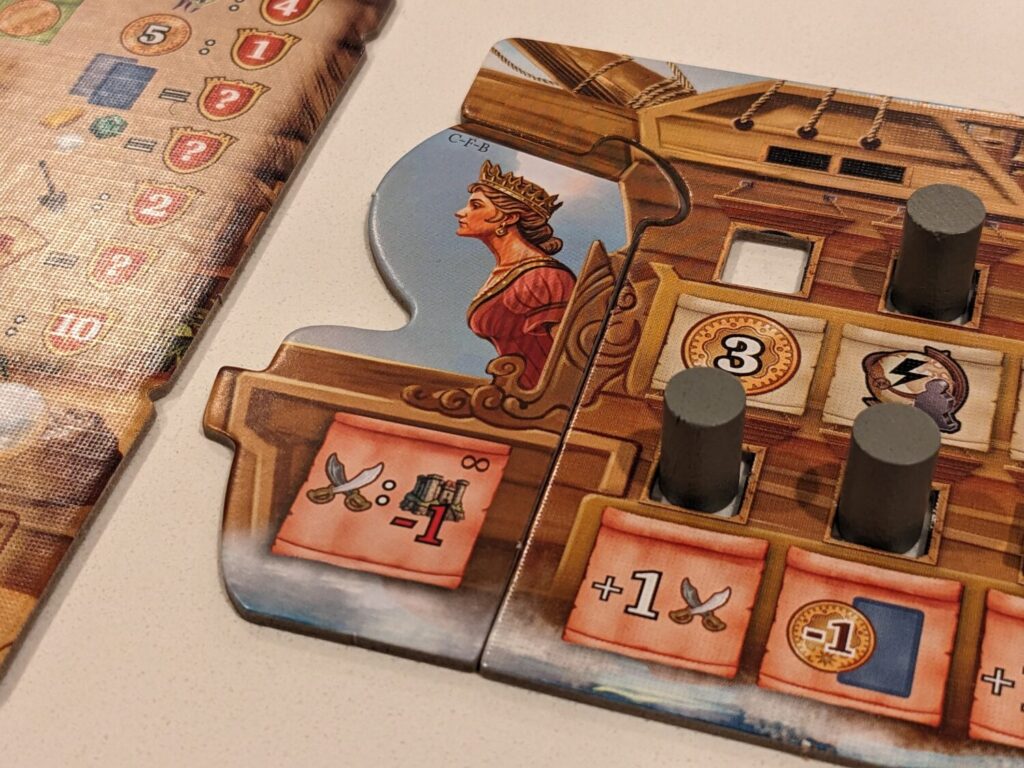
Commander Boards
Everyone loves asymmetric powers, right? If that’s your jam, run out and buy Commanders right now.
That’s because the expansion comes with 12 Commander boards, featuring different powers that players can use to attack the system. While I have not used all 12 boards yet, it feels like the main way for someone to win with their powers is to lean in, hard.
The Commander boards come with a twist: during setup, each player is given two commander powers to choose from. Whichever one is not selected is flipped, so that a player has two boards in front of them—a main board with a picture of their commander, and a secondary board with a small tech tree, with each of the 12 boards featuring a different tree. The tree is very tight, with only four spaces that need to be filled by fort tokens. But filling all four spaces grants the player a 10-point bonus during the game, as well as a host of decent bonuses that can be triggered during play based on how each fort token was acquired.
On the front sides, each commander board shows off a power as well as spaces that can be filled by rum and/or fort tokens, one of which might provide a chance for more end-game scoring. Some of the powers are awesome…Victor Vile is already a fan favorite, because Vile’s raiding dice are always equal to seven Raiding power (dice aren’t even rolled when Vile takes the Raiding action!). I played a game with Looting Lanister, which allowed me to place a special Black Market tile reserved just for me that granted me a quest card every time I visited that location. Things got better after I unlocked Lanister’s other power, which triggered my doubloon income each time I visited a different location with my other special Black Market tile.
Leaning all the way into a commander’s power seems like the way to fly, so the commander really pushes a player into a certain direction. Ravaging Rajesh gets a second explorer token to use for the entire game, so drafting Rajesh probably means that you’ve got to go really hard on the Explore action. This is not a bad thing, but I think it would be hard to win if a player neglected elements of their chosen power.
Many of my Eurogame strategy friends love games that give players special powers that no one else gets. If that’s your thing, Commanders is a no-brainer.
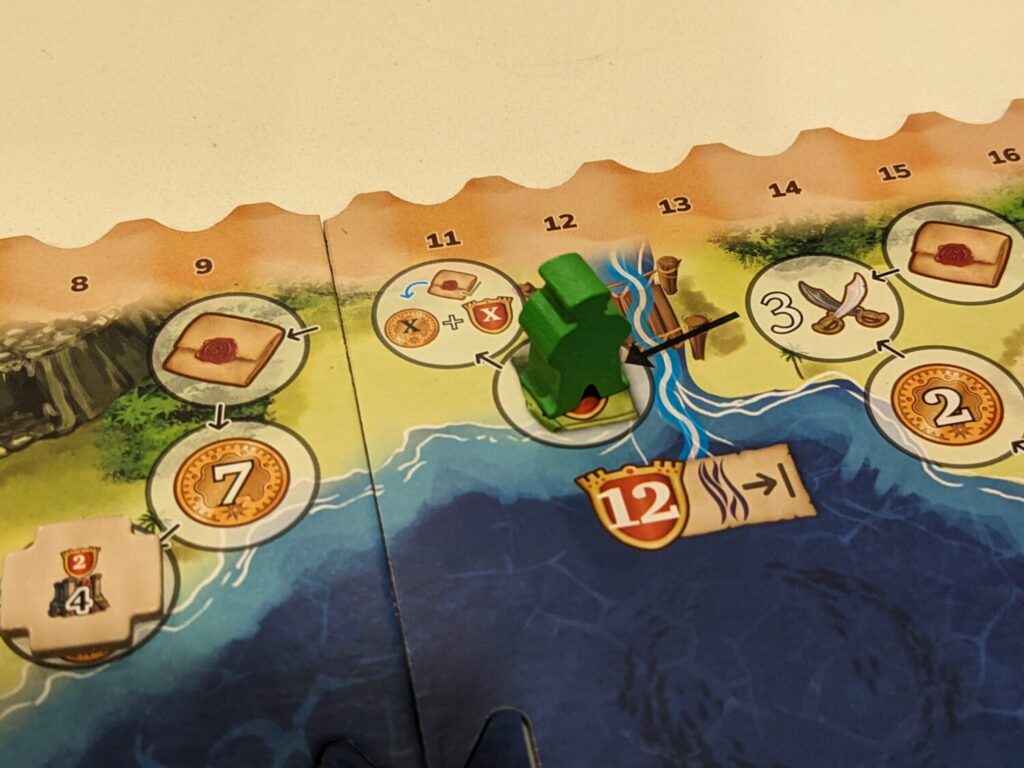
Cannons and Forts
During setup, small fort tokens are placed on each location card, the Gulf (depending on player count), and some of the new spaces on this expansion’s Exploration board. When visiting a location with a token, players have a choice after completing their ship upgrades—take the card’s normal location action, or attack the fort. Each token ranges in points, all the way up to 17 points for the hardest forts to take out, so it’s always worth a look when given the option.
To take out the fort, players roll dice like they are using the Raiding action, but Raiding powers are not applicable to a fort attack. Instead, players can use any of the three dice’s pip values, then add to that a strength value equal to their cannon strength. If they meet or exceed the defense value of the fort token, they score the points showing on the fort token and can use the token to trigger a bonus on their commander boards (either the main one, or the flipped board).
Cannon tokens are acquired whenever a player gains a bonus showing the cannon icon, which appears on many of the expansion’s new level 2 improvement cards, Exploration board spaces, or as a bonus when reaching the Gulf on the right side of the ocean map. In a fun twist, normal gray cubes used as ship upgrades are replaced with cannons, so finding ways to flip as many of your gray cubes out for cannon tokens (also gray in color) is vital to investing in the fort attack strategy. (Cannons still count as ship upgrades for all other purposes, such as quest cards that score for upgrades or when unlocking more sections of a player’s ship board.)
Across my plays, players didn’t really invest in the forts and cannons as much as I was guessing. That usually came down to the fact that Raiding power is separate from cannon strength, so players typically skipped the forts until late in the game when they had enough cannons and enough fort tokens with lower defense values to ensure they could make that strategy worthwhile. (One of the commanders, Flintlock Frank, has the kind of powers that make a fort attack path easier.)
Where forts became really interesting were on the locations that don’t usually get the love in the base game, such as the locations where one can buy improvement cards for a three-doubloon surplus, or the double bury action card. Those are spaces I usually skip unless I have a strong card-buy discount. With the expansion and a fort that has a low defense value, those locations now offer a decent reason to visit.
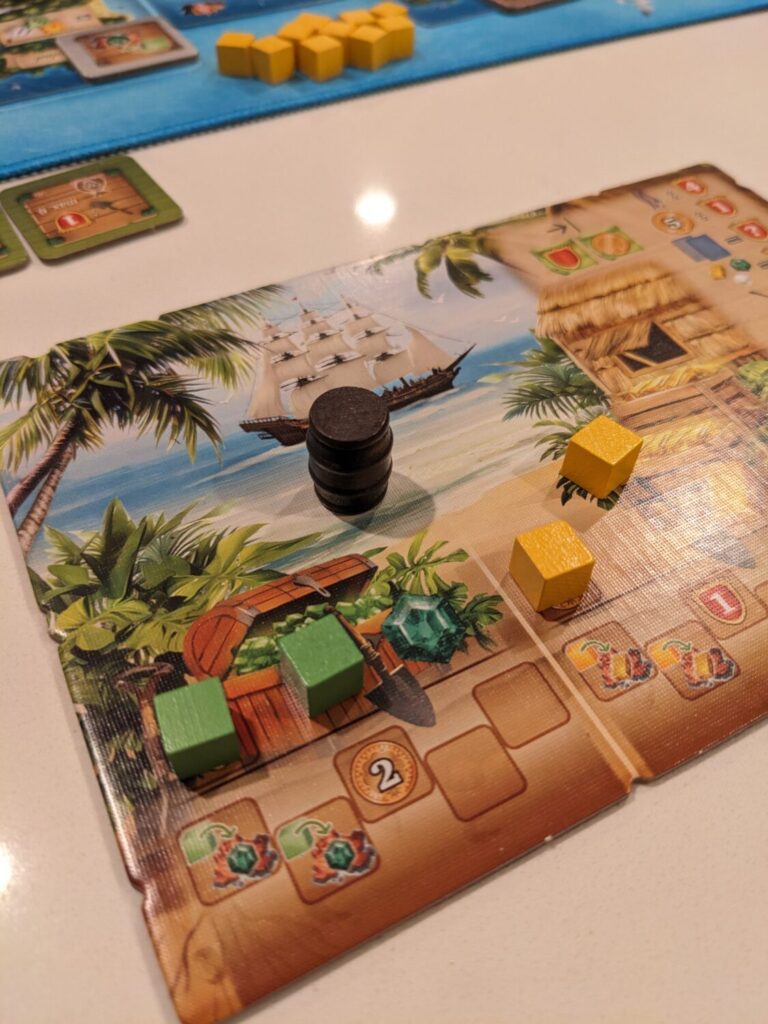
Rum Markets
Commanders includes two tokens used in the same positions as the Treasure Value tokens from the base game, on two of the eight location cards placed during setup. At a rum market, players can take one of two distinct actions: buy a single rum token for three doubloons to place on their Hideout board (where other treasure is usually stored), or move a previously-acquired rum token to an activation space on one of their commander boards to trigger a bonus. (This is somewhat similar to how rubies were used in the base game’s Rubies variant.)
Players mostly ignored the rum action during my plays. Further, if rum markets were placed on locations that are usually less desirable (usually the spots where you can buy location cards for an increased value), players never went out of their way to grab a rum token. Some spaces on the Exploration boards serve as a rum market, or grant players a free rum token; those got more love than the rum markets at the location cards.
My issue with the rum tokens: you’ll need at least one rum token to trigger one of each commander’s board bonuses. So that makes them at least a little important, if not downright essential, based on the bonuses a player hopes to trigger during the game. But because of this, players sometimes spent less time chasing fort tokens, which are also used to trigger commander board bonuses.
Rum markets feel extraneous. Removing them completely (and replacing those with forts) wouldn’t alter the expansion’s overall scope, and even now, I’m not sure I would ever go hard on rum tokens in future plays. In a game where winners regularly score more than 200 points, rum doesn’t really move the needle…I’ll probably grab one each game to ensure I can fully score my commander board, but if I can get a free rum from another spot, I’m gonna do it.
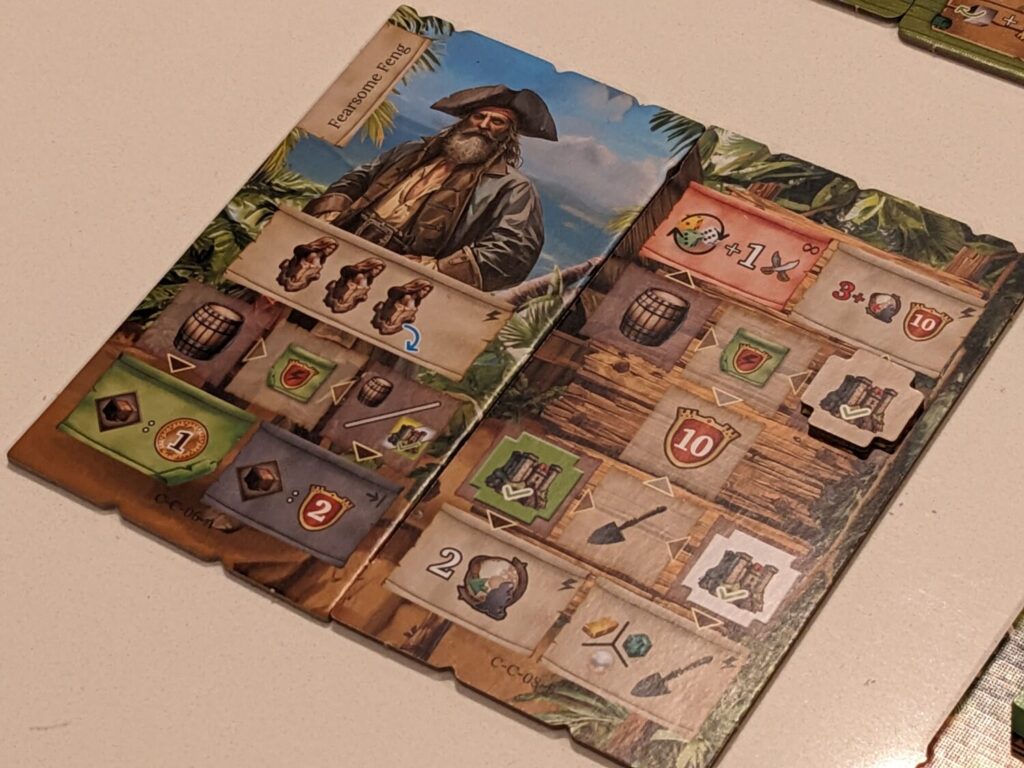
Come for the Commander Boards, Stay for the Commander Boards
Pirates of Maracaibo: Commanders is not essential fare. Most of that is the fault of the base game; it’s already so good that it really didn’t need any extras.
But if you are looking for different ways to play, particularly to drive players towards a certain playstyle to attack the puzzle, the commander boards are a nice addition. The 12 powers really are varied, and I already think a few of them are better than others. (Fearsome Feng, a commander I used in my first expansion play, gives the player an extra Figurehead tile at the start of the game, allowing the player to have two during the game. That’s not bad, but it’s not game-breaking. Vicious Viviana lets a player score the better of the two scoring lines on a quest card as long as they meet the requirement of the first line. Next time I get the choice, I’m taking Viviana over Feng!!)
I like that the powers are varied, and I also like that I’m not sure they are equal. As long as I have choices, I’m not too caught up in whether one power is balanced over another. The best players are always going to find a way to score the most points no matter which commander they draft during setup.
The other extras in the box are fine. I like that the new Exploration board has not only different bonuses, but different action boosts when picking from the choices in the Gulf. For example, the Exploration bonus is +4 movement in the base game, but here, it ranges between +2 and +3. The +2 side also lets a player trigger the space their Explorer token is already standing on before moving, like the bonus available on the ship upgrade space of a player’s board.
Grab this expansion if you insist on having different ways to grant each player their own superpower. Otherwise, I think it’s safe to skip. No matter what, please buy the base game if you haven’t already. Pirates of Maracaibo is designer Alexander Pfister’s best work!


